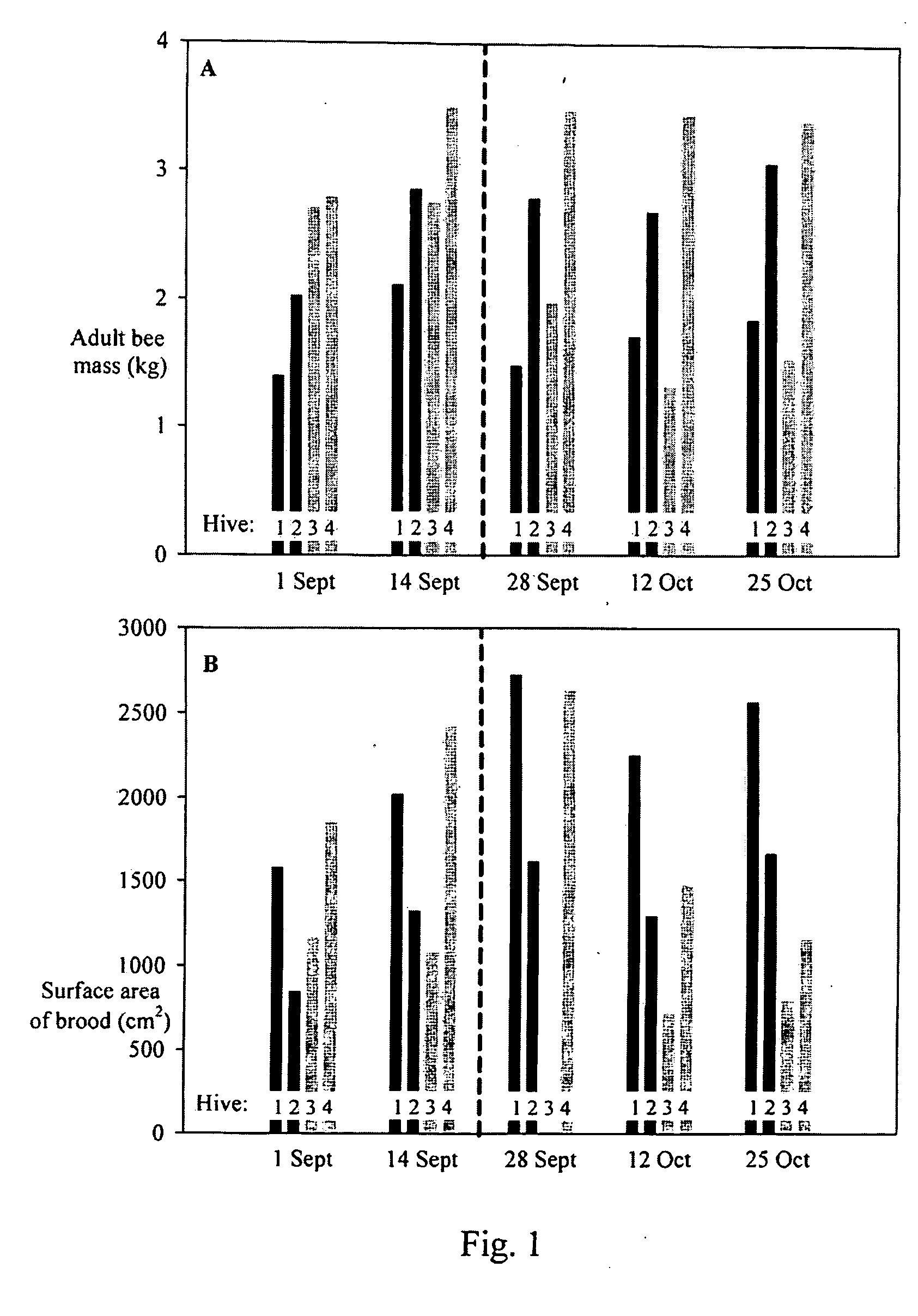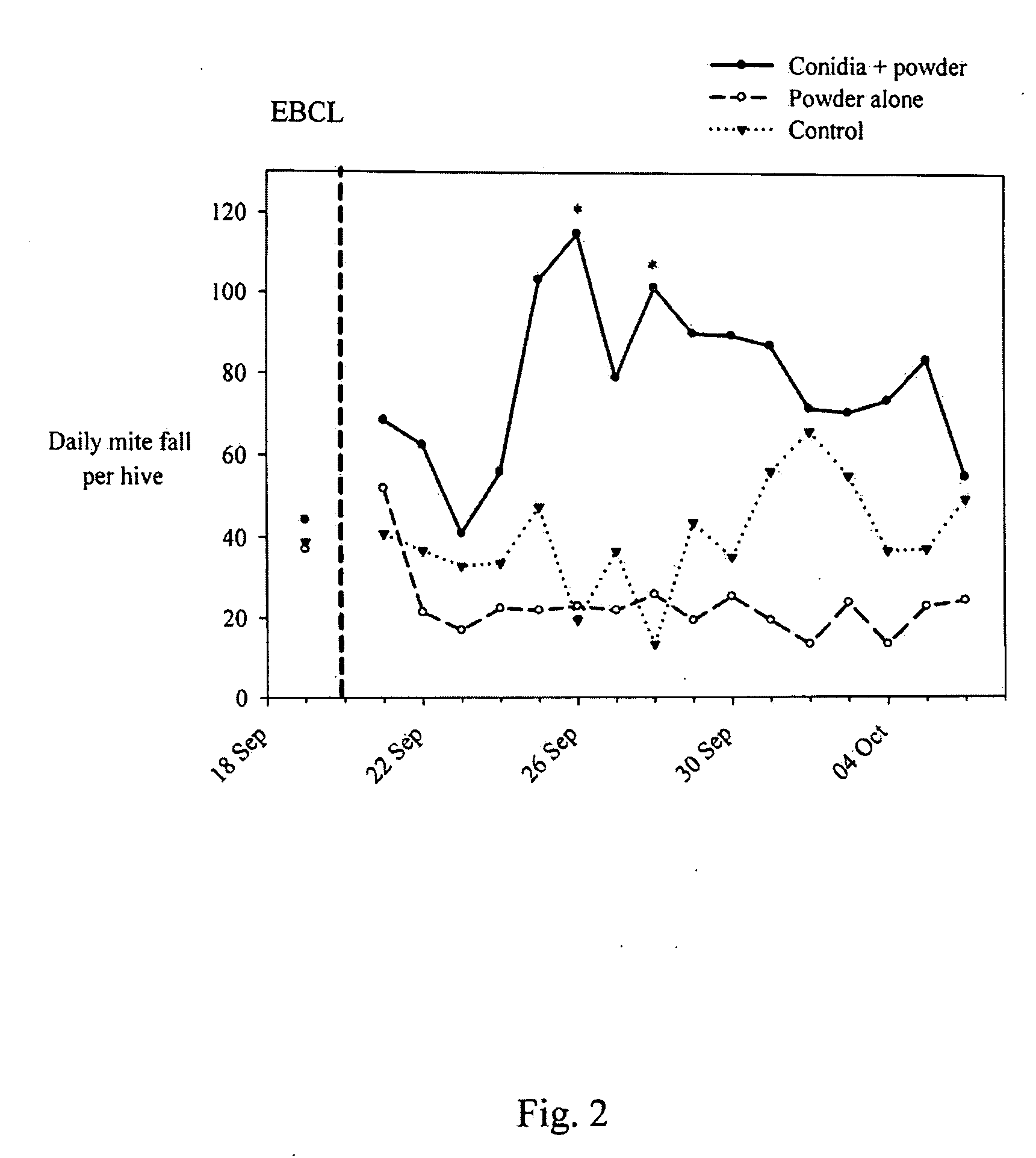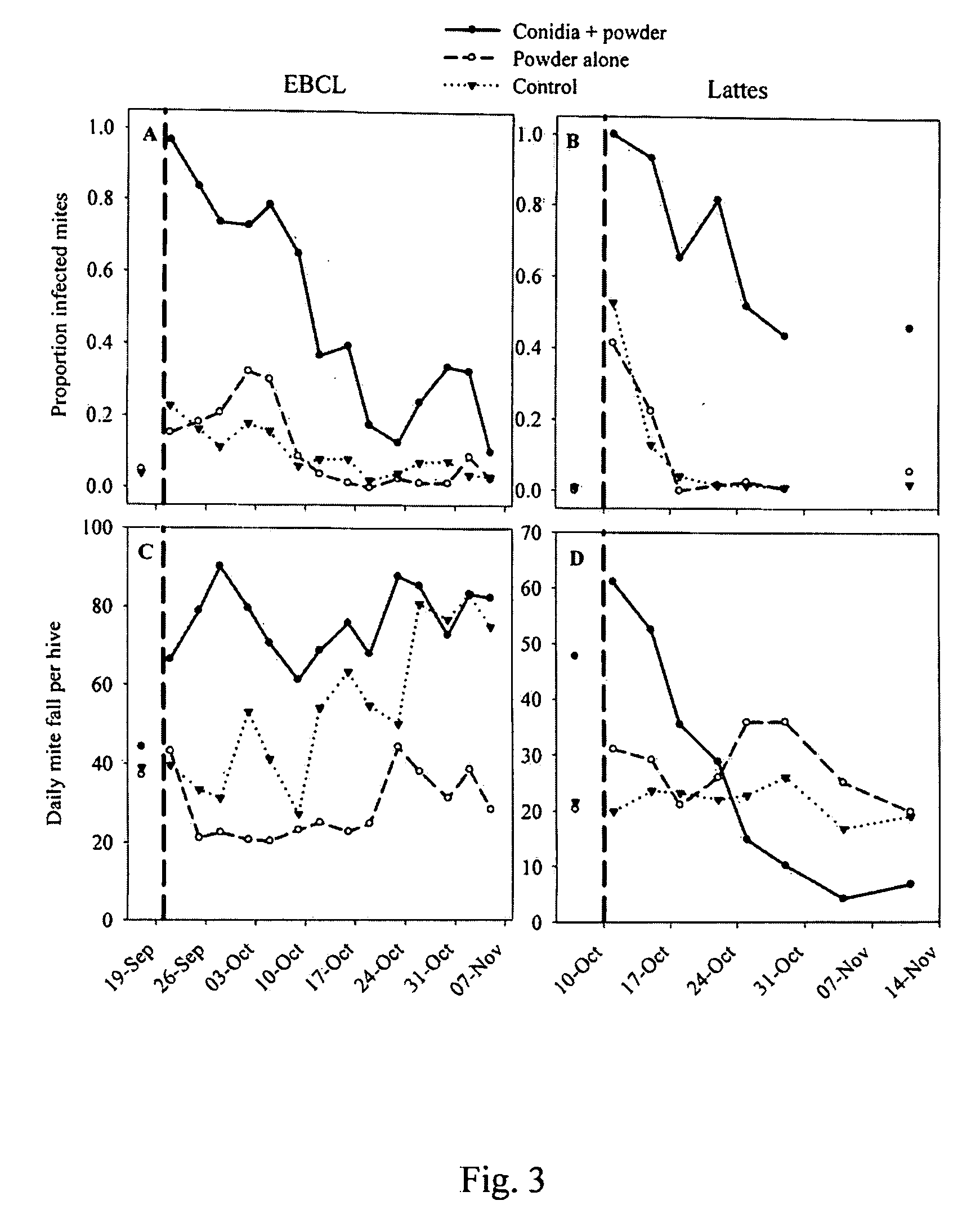Biocontrol of Varroa Mites
- Summary
- Abstract
- Description
- Claims
- Application Information
AI Technical Summary
Benefits of technology
Problems solved by technology
Method used
Image
Examples
example 1
[0057]Apiaries were visited at several locations. At each apiary, a metal tray was placed under each hive, the hives were opened and approximately 150 grams of powdered sugar was poured into the brood box, making an effort to divide it among all the between-frame spaces. Powdered sugar has been shown to be effective in knocking down V. destructor on adult honey bees (Fakhimzadeh, Apidologie, Volume 32, pages 139-148, 2001). The hives were then closed and about 20 minutes later all the material that had collected on the tray was poured into a sealed plastic box. The boxes were transported to the laboratory and all Varroa mites were placed on water agar (about 6 grams / liter) with chloramphenicol (about 0.4 grams / liter) to reduce bacterial growth, incubated for about two weeks at about 23° C. and observed for at least three weeks for sporulation. Any entomopathogenic fungi collected were used to inoculate two types of media: Sabouraud dextrose agar with yeast (SDAY) (Goettel and Inglis...
example 2
[0059]Isolates from Example 1 were evaluated, as well as several Metarhizium anisopliae (Metschnikoff) Sorokin (Deuteromycota: Hyphomycetes) isolates from the collection of entomopathogenic fungi at the European Biological Control Laboratory (EBCL) in bioassays using Varroa mites kept on bee pupae. Cultures of candidate fungal isolates were grown on SDAY with chloramphenicol and harvested after about 12-14 days. For each experiment, the viability of the conidia was assessed by plating a sample of the suspension onto SDAY, incubating the plates at about 23° C. for about 24 hours, and examining about 200 conidia for germ tubes under a light microscope. Prior to the bioassay, bee pupae were collected from hives by cutting sections of brood comb from the frame, placing the pieces in a sterile plastic box and, in the lab, carefully extracting the pupae and placing them individually in small (about 2×2×1 cm) plastic boxers with screen covers. Any Varroa mites found on the pupae upon their...
example 3
[0061]Eight bee colonies, four established one year and one month before the other, were maintained in painted, 10-frame wooden Dadant brood boxed (56 1 capacity) (Ickowicz, Bollene, France). The hives were covered with telescoping lids with a weight placed on top to stabilize the hive in wind. The hives were arranged in two groups of four hives each, about 4 meters apart. Within each group, hives were kept about 50 cm apart. Permanent water sources existed less than about 1 km away. In order to monitor changes in hive weight during the course of the experiment, four of the hives, two in each hive group, were placed on top of two short wooden planks resting on stainless steel electronic balances (TEKFA® model B-2418, Galten, Denmark). The balances had about a 100 kg maximum capacity, a precision of about 10 grams, and an operating temperature range of about −30 degrees C. to about 70 degrees C. The balances were linked to 12-bit dataloggers (Hobo® U-12 External Channel datalogger, B...
PUM
 Login to View More
Login to View More Abstract
Description
Claims
Application Information
 Login to View More
Login to View More - R&D
- Intellectual Property
- Life Sciences
- Materials
- Tech Scout
- Unparalleled Data Quality
- Higher Quality Content
- 60% Fewer Hallucinations
Browse by: Latest US Patents, China's latest patents, Technical Efficacy Thesaurus, Application Domain, Technology Topic, Popular Technical Reports.
© 2025 PatSnap. All rights reserved.Legal|Privacy policy|Modern Slavery Act Transparency Statement|Sitemap|About US| Contact US: help@patsnap.com



